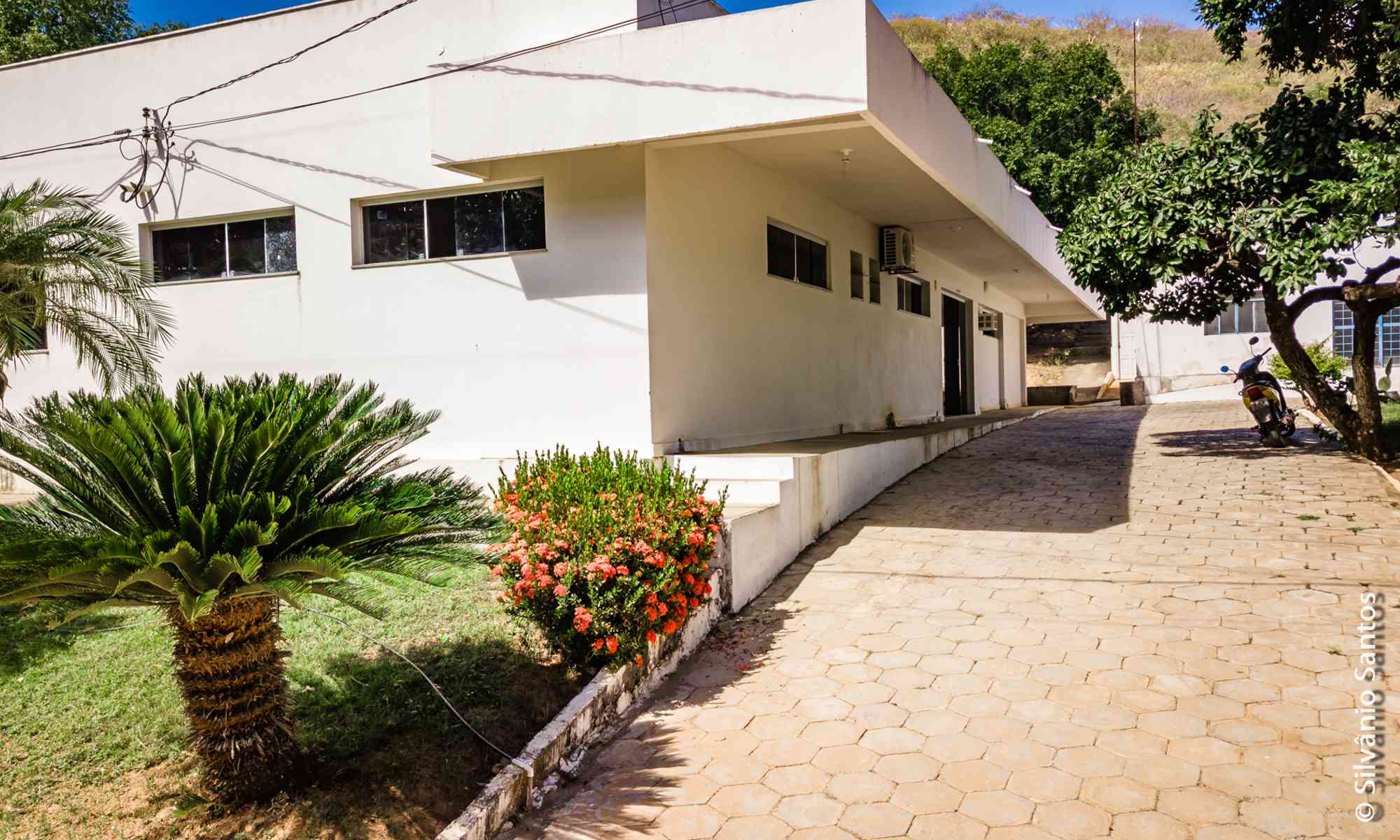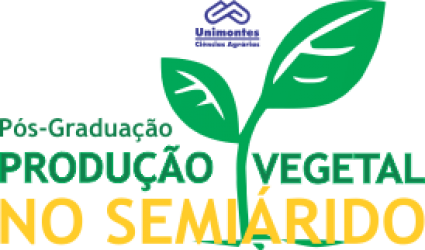- Version
- Download 22
- Tamanho do Arquivo 1.20 MB
- Data de Criação 14/06/2021
- Download
SOUZA, Mirna Ariane Taveira de Sousa e. Qualidade e conservação pós-colheita da atemoia ‘Gefner’ colhida em diferente épocas. 2019. 42 p. Dissertação (Mestrado em Produção Vegetal no Semiárido) – Universidade Estadual de Montes Claros, Janaúba, 2019.
A atemoia é um fruto perecível com rápido amadurecimento, sendo necessária a adoção de técnicas que mantenha sua qualidade durante a colheita e pós-colheita. Neste trabalho, objetivou-se avaliar as condições de colheita e o uso de atmosfera modificada na qualidade de frutos de atemoieira ‘Gefner’ em duas épocas do ano. A pesquisa foi realizada em duas etapas. Na primeira etapa, os frutos foram avaliados em cinco condições de colheita em campo: T1; colheita padronizada na caixa plástica de colheita no campo, T2; caixa plástica de colheita no campo, T3; frutos sem pedúnculo na caixa plástica de colheita no campo, T4; entrada do galpão de embalagem e T5; caixa de papelão de comercialização, mantidos em laboratório a ± 25°C em delineamento inteiramente casualizado, com 4 repetições e 5 frutos por parcela. Foram utilizados frutos da atemoieira colhidos manualmente no estádio de maturação fisiológico (verde-amarelado-pálido). As coletas foram realizadas em duas épocas verão e inverno. Os frutos foram separados individualmente em redes de polietileno e acondicionados em caixa de colheita para evitar qualquer atrito que pudesse danificar o fruto durante o transporte. Na segunda etapa, foram analisados tratamentos de conservação pós- colheita sendo: T1; frutos sem tratamento (testemunha), T2; frutos envolvidos com filme PVC (policloreto de vinila) + fécula de mandioca, T3; frutos com cera de carnaúba, T5; frutos envolvidos com filme PVC + cera de carnaúba, e T6; frutos envolvidos com filme PVC, armazenados a ± 25°C até a completa maturação, em delineamento em blocos casualizados, com 3 blocos e 5 frutos por parcela. Utilizaram-se frutos da atemoieira colhidos manualmente no estádio de maturação fisiológico (verde-amarelado-pálido) sendo realizada em duas épocas outono e primavera. Os frutos foram coletados com luvas de colheita e retirados da planta com auxílio da tesoura de poda mantendo uma parte do pedúnculo, e acondicionados nas caixas de coleta. Foi avaliado diariamente em ambas as etapas até o amadurecimento quando os frutos apresentavam menor firmeza a perda de massa fresca e ocorrência de rachadura. Para as variáveis de coloração (ângulo hue e croma), sólidos solúveis, acidez titulável e ratio foram realizados em dois momentos, logo após a colheita e no amadurecimento. A análise estatística foi realizada considerando o esquema de parcela subsubdividida em duas épocas de colheita, aplicando-se o teste de Tukey a 5% de probabilidade quando significativo. A ocorrência de rachaduras no fruto está ligada diretamente com o amadurecimento do fruto a partir do 4° dia de armazenamento para a etapa de condição de amostragem no campo e 3° dia para a etapa com uso de atmosfera modificada. A ocorrência de chuva interfere diretamente na presença de rachaduras, sendo os meses de maior ocorrência de rachaduras janeiro, maio e novembro. As condições de colheita não influenciam no aparecimento de rachadura, firmeza e coloração dos frutos. Frutos colhidos sem o pedúnculo tendem a perder maior quantidade de massa fresca. O uso de filme plástico PVC reduz a perda de massa fresca, porém não diminui a ocorrência de rachaduras no fruto.
Palavras-chave: Annona cherimola x A. squamosa, qualidade física e química, atmosfera modificada, rachadura de frutos.
Quality of 'Gefner' atemoia harvested at different times
The atemoya is a perishable fruit with rapidly maturing, requiring the adoption of techniques to keep their quality during harvest and post-harvest. In this work, the objective was to evaluate the harvest conditions and the use of modified atmosphere in the quality of 'Gefner' atemoya fruits at two times of the year. The research was carried out in two stages. In the first stage, the fruits were evaluated in five field harvest conditions: T1; standardized harvest in the field's plastic harvest box, T2; plastic field harvest box, T3; fruits without stalk in the plastic harvest box in the field, T4; entrance to the packing shed and T5; marketing cardboard box, kept in laboratory at ± 25 °C in a completely randomized design, with 4 repetitions and 5 fruits per plot. The atemoya fruits were harvested manually at the stage of physiological maturation (pale yellowish-green). The collections were carried out in two seasons, summer and winter. The fruits were separated individually in polyethylene nets and packed in a harvest box to avoid any friction that could damage the fruit during transport. In the second stage, post-harvest conservation treatments were analyzed: T1; fruits without treatment (control), T2; fruits wrapped with PVC film (polyvinyl chloride) + cassava starch, T3; fruits with carnauba wax, T5; fruits wrapped with PVC film + carnauba wax, and T6; fruits wrapped with PVC film, stored at ± 25 ° C until complete ripening, in a randomized block design, with 3 blocks and 5 fruits per plot. The atemoya fruits harvested manually at the stage of physiological maturation (pale yellowish-green) were used in two seasons, autumn and spring. The fruits were collected with harvest gloves and removed from the plant with the help of pruning shears keeping part of the stalk, and placed in the collection boxes. It was evaluated daily in both stages until ripening when the fruits had less firmness, loss of fresh weight and cracking. For the color variables (hue angle and chroma), soluble solids, titratable acidity and ratio were performed in two moments, just after harvest and at ripening. The statistical analysis was performed considering the split plot subdivided into two harvest seasons, applying the Tukey test at 5% probability when significant. The occurrence of cracks in the fruit is directly linked to the ripening of the fruit after the 4th day of storage for the stage of sampling condition in the field and 3rd day for the stage with the use of modified atmosphere. The occurrence of rain directly interferes with the presence of cracks, with the months with the highest occurrence of cracks being January, May and November. The harvest conditions do not influence the appearance of cracking, firmness and color of the fruits. Fruits harvested without the stalk tend to lose more fresh weight. The use of PVC plastic film reduces the loss of fresh weight, but does not decrease the occurrence of cracks in the fruit.
Keywords: Annona cherimola x A. squamosa, physical and chemical quality, modified atmosphere, cracking of fruits.

